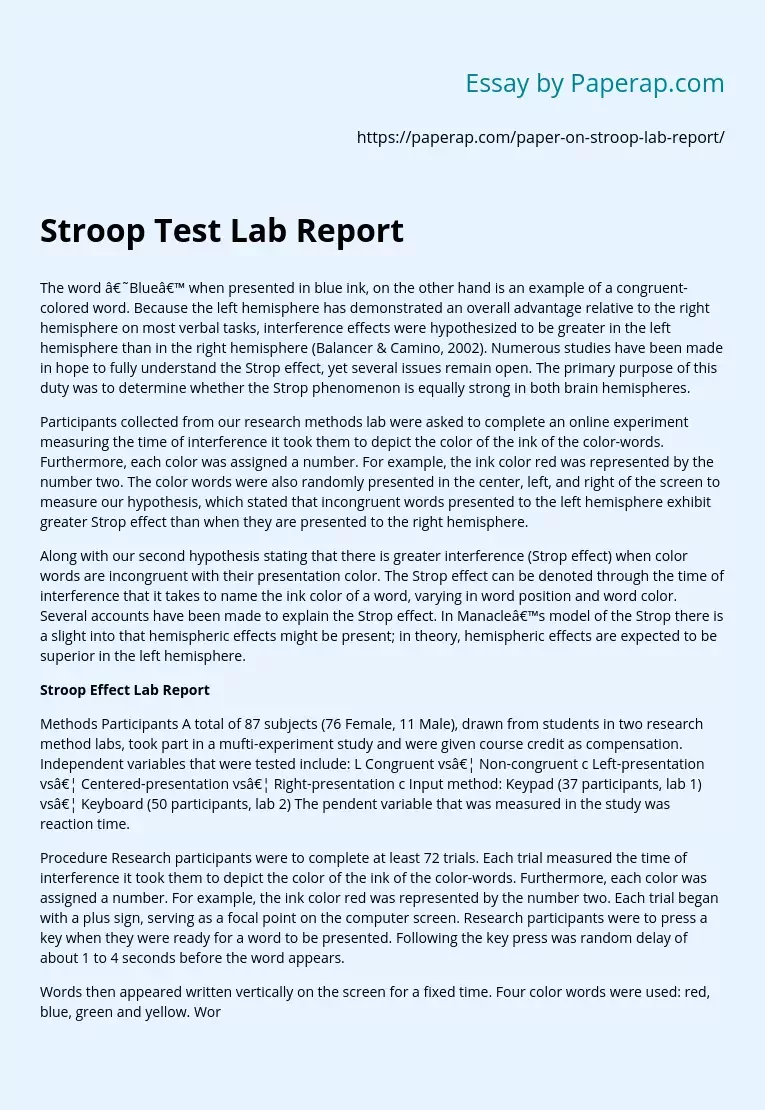Stroop Test Lab Report
The word ‘Blue’ when presented in blue ink, on the other hand is an example of a congruent-colored word. Because the left hemisphere has demonstrated an overall advantage relative to the right hemisphere on most verbal tasks, interference effects were hypothesized to be greater in the left hemisphere than in the right hemisphere.
Numerous studies have been made in hope to fully understand the Strop effect, yet several issues remain open. The primary purpose of this duty was to determine whether the Strop phenomenon is equally strong in both brain hemispheres.
Participants collected from our research methods lab were asked to complete an online experiment measuring the time of interference it took them to depict the color of the ink of the color-words. Furthermore, each color was assigned a number. For example, the ink color red was represented by the number two. The color words were also randomly presented in the center, left, and right of the screen to measure our hypothesis, which stated that incongruent words presented to the left hemisphere exhibit greater Strop effect than when they are presented to the right hemisphere.
Along with our second hypothesis stating that there is greater interference (Strop effect) when color words are incongruent with their presentation color. The Strop effect can be denoted through the time of interference that it takes to name the ink color of a word, varying in word position and word color. Several accounts have been made to explain the Strop effect. In Manacle’s model of the Strop there is a slight into that hemispheric effects might be present; in theory, hemispheric effects are expected to be superior in the left hemisphere.
Stroop Effect Lab Report
Procedure Research participants were to complete at least 72 trials. Each trial measured the time of interference it took them to depict the color of the ink of the color-words. Furthermore, each color was assigned a number. For example, the ink color red was represented by the number two. Each trial began with a plus sign, serving as a focal point on the computer screen. Research participants were to press a key when they were ready for a word to be presented. Following the key press was random delay of about 1 to 4 seconds before the word appears.
Words then appeared written vertically on the screen for a fixed time. Four color words were used: red, blue, green and yellow. Words were randomly printed in a word-color congruent form or non-congruent form appearing at any of three positions.
Stroop Test Lab Report. (2019, Dec 05). Retrieved from https://paperap.com/paper-on-stroop-lab-report/

